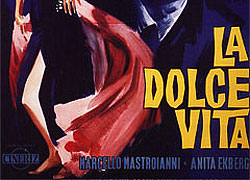
In 1960 the Santa Fe Railroad’s magnificent Super Chief still carried Hollywood royalty between Chicago and Los Angeles; TWA’s streamlined Constellation still flew between Rome and Cairo; and as the Beat Generation hurled head-long into the sexual revolution, avant-garde film-maker Federico Fellini was quietly finishing his masterpiece of broken dreams, La Dolce Vita.
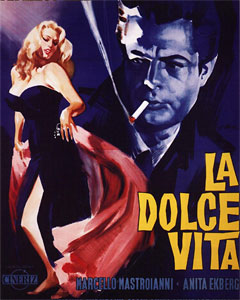
Fellini shot La Dolce Vita on the Via Veneto, the Roman street of nightclubs, sidewalk cafes and the endless procession of the night—curiously enough, a setting not unlike here in South Beach.
The film centers around a gossip columnist named Marcello—played by Marcello Mastroianni—who moves through Rome’s nightlife netherworld exposing the glamorous but shallow existence of fading aristocrats, B-grade movie stars, and aging playboys, without regard for the hurt and embarrassment caused by his indiscreet and personal revelations of the people he writes about. Yet, through it all, he dreams of a pure existence, an existence free from the filth and sleaze of the world he lives in.
La Dolce Vita projects one conceptually striking image after another, as in the opening scene, where Marcello and his inseparable cameraman, Paparazzo are flying in a helicopter trailing another craft that is transporting a huge statue of Christ to St. Peters Square. With the statue strung far below the lead helicopter, Christ appears to sail through the crystal-clear sky with out-stretched arms. Enroute, they forsake the Christ-vision to circle a high-rise building while Marcello flirts with a group of nearly nude girls, sun-bathing on the rooftop. Symbolism noted?
Later that evening at a nightclub, Marcello meets Maddalena (Anouk Aimee), an over-it-all, nymphomaniac daughter of a wealthy Roman businessman. Their evening together passes through all the meaningless mini-dramas that evenings in nightclubs always produce, and ends up in the pitiful apartment of a prostitute they have given a lift home to. Maddalena, bored with the conventional pleasures of her life delights at the chance to experience an even greater walk on the wild side, and as the scene in the prostitute’s apartment fades to black, Marcello and Maddalena make love, with the prostitute only steps away.
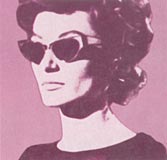
At dawn, Marcello returns to his apartment to find that his neurotic and overly-jealous mistress Emma has attempted suicide by taking poison, and as he rushes her to the hospital, for a brief moment it appears that he finally becomes aware of the pain that cruelty and thoughtless acts can cause. But the revelation is short-lived.
With his mistress soon out of danger, Marcello rushes to the airport on an assignment to cover the arrival of Sylvia (Anita Ekberg), a ravishing Hollywood movie star arriving in Rome to begin work on her next picture. Marcello spends the next 24 hours with Sylvia under the spell of his enchanted vision of her that he hopes will become reality. Instead, after bringing her home at dawn he suddenly winds up on the wrong side of an ass-kicking at the hands of Sylvia’s husky boy-friend.
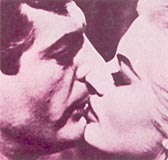
Broken, confused and searching for answers to the eternal questions of his meaningless life, Marcello visits his friend Steiner, an intellectual whose advice Marcello respects. However, no answers are forth-coming. Later in the film, as Emma and Marcello spend an unforgettable evening at Steiner’s home, and in the company of Steiner’s family and intellectual friends, Marcello begins to discover harmony and peace of mind. Emma, now even more jealous and demanding, attempts to convince him that his only salvation is in giving himself to her completely.
Through various other settings the film comes to the point where Marcello is called to report on a double murder/suicide scene. He is shocked beyond belief to discover that Steiner has killed his two children and then shot himself. At this point Marcello suffers his greatest disillusionment.
Unable to grasp the life-line of peace and harmony he once envisioned in his friend Steiner’s life, Marcello descends even deeper into his previous world of sleaze and debasement, the omega-point coming at a party at the seaside villa of a movie producer that lapses into an unbridled orgy where Marcello thoroughly degrades himself, becoming a man without a soul.
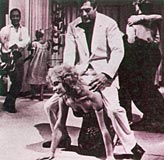
In the closing moments of the film, the last symbol of hope and innocence appears to him in the form of a young girl that he had earlier befriended. She beckons him to join her, but Marcello, now beyond redemption, cannot.
La Dolce Vita was a paradox from the first day it was release in 1960. The Vatican immediately placed it on its “Excluded List.” The National Legion of Decency noted that, while the movie’s theme was “animated throughout by a moral spirit,” they none-the-less placed it in a “special classification” as a “protection to the uninformed against wrong interpretation and false conclusions.”
Over the years various theories have surfaced as to Fellini’s true message in this picture. Many have supposed that La Dolce Vita catalogs the seven deadly sins, as it takes place on the seven hills of Rome; it involves seven nights and seven dawns, and so forth. Some say that Fellini purposely paired certain scenes to give special meaning, as when Marcello follows the lustful Sylvia from the top of St. Peters, into the bowels of the nightclubs, foreshadowing his coming descent into oblivion. Maybe so, but we’ll never know for sure since no one ever got an answer out of Fellini before he checked-out some years ago.
So, why take the time to write about a 40 year-old movie? No special reason, really. Maybe it’s simply because I use to fantasize about Anita Ekberg back when the other kids were still watching Howdy-Doody. Or maybe it’s because I’m amazed by how much Marcello’s world mirrors South Beach—one big sensation-filled embodiment of the oblique innuendo—it’s hard to say.
But, on the other hand, maybe I just like black and white movies.
